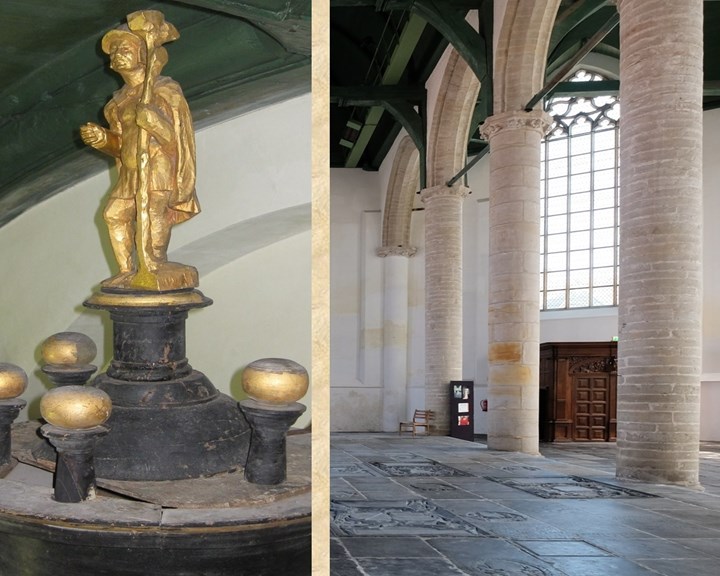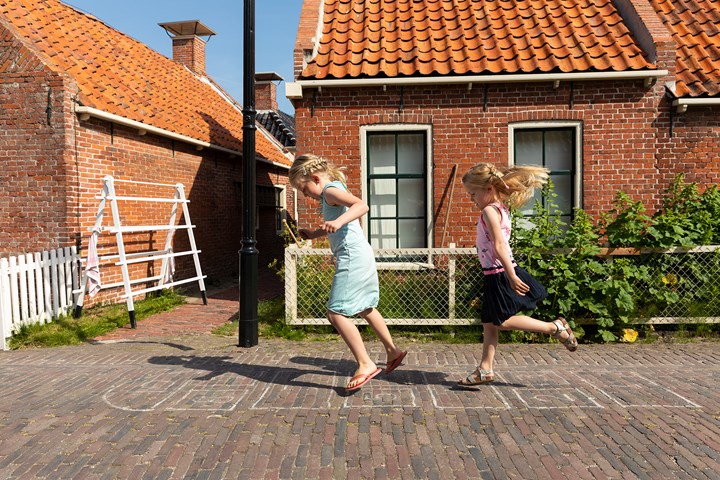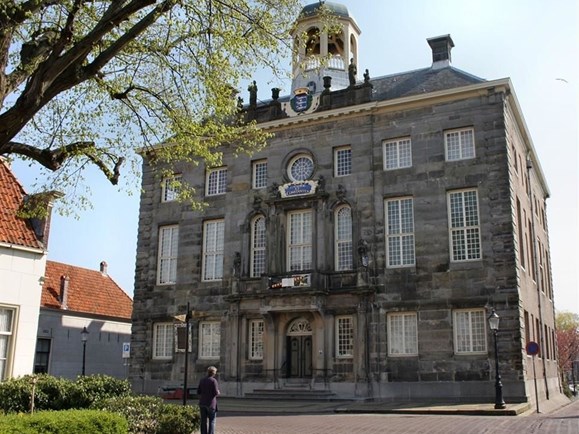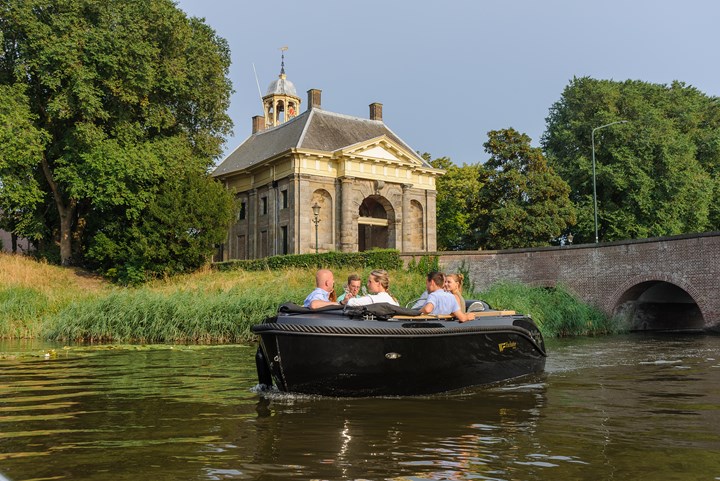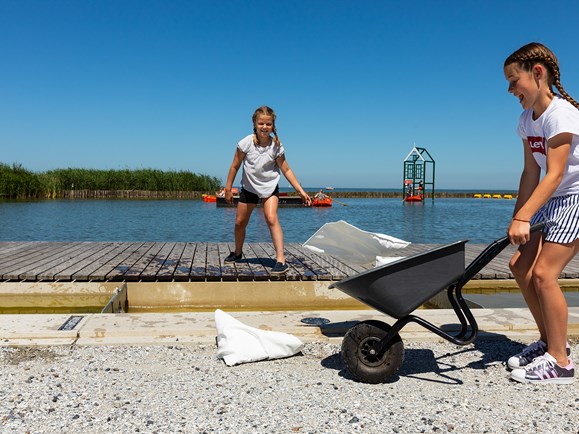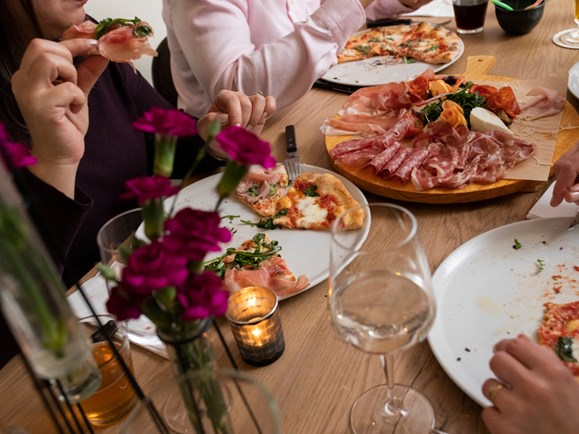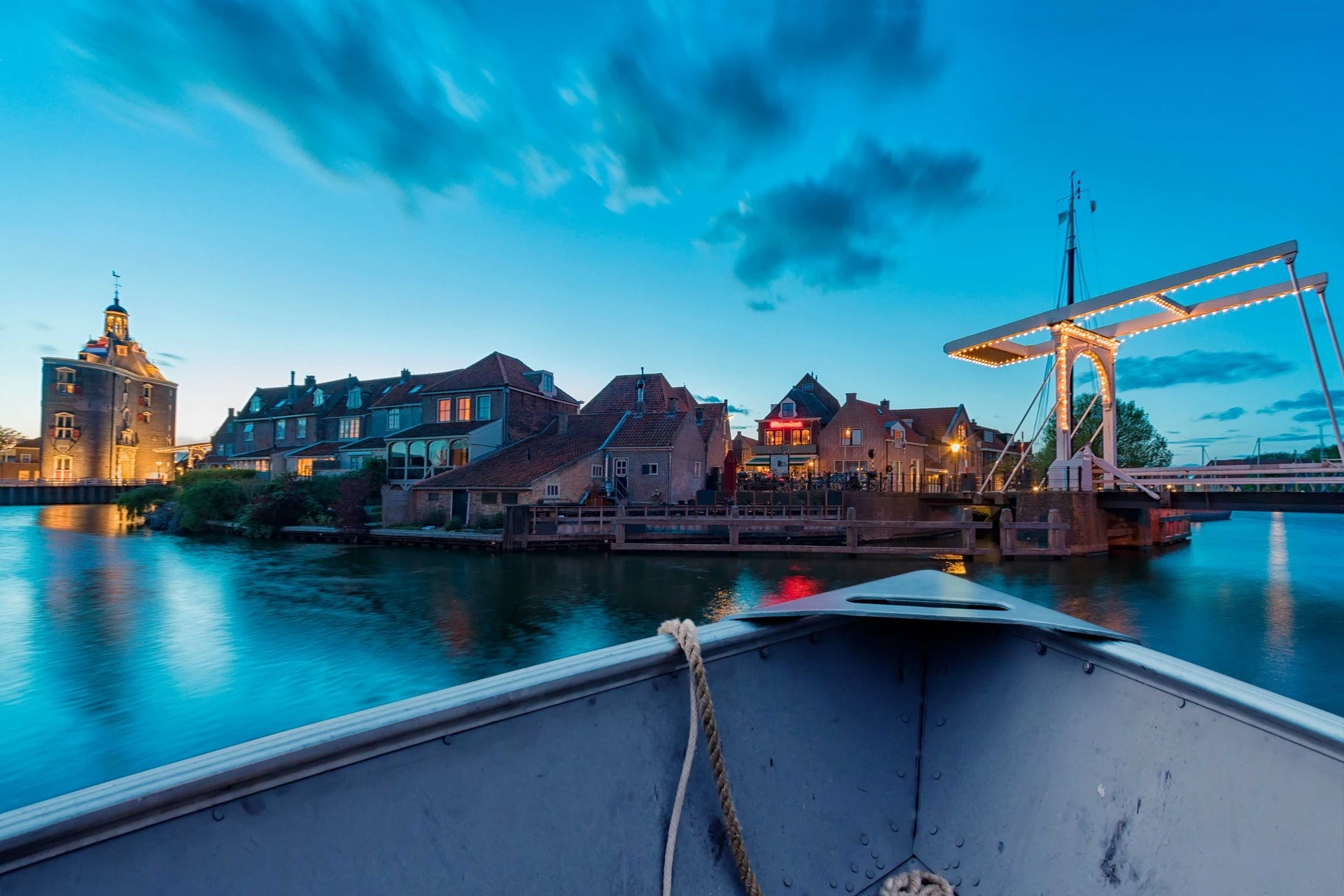On this page you will discover various celebrities from Enckhuysen during the Golden Age, say the movie and pop stars of the time!
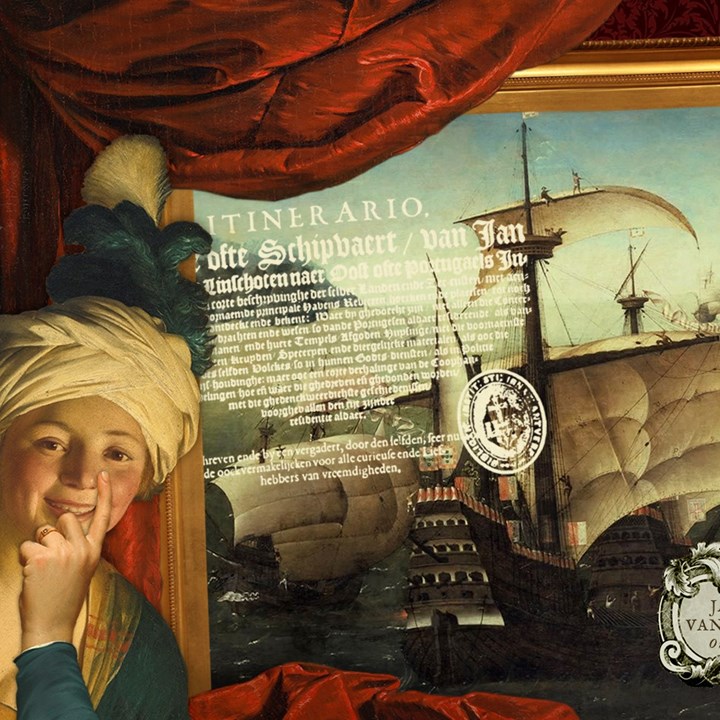
Discover the heroes and heroines of Enkhuizen

Celebrities of the Golden Age
Enkhuizen has been inhabited for centuries by a committed, heroic and articulate people. Enkhuizers do not like coercion, but they do like freedom and taking advantage of opportunities, and so does Curious Aagje.
This protagonist from a nationally known 17th century farce from Enkhuizen went on the road too! Be as curious as our Aagje and discover Enckhuysen!
Discover the remaining treasures and buildings from that time, but also discover the great heroes and heroines. We all know the world-famous heroes, such as Bernardus Paludanus, Lucas Waghenaer and Jan Huygen Van Linschoten, but what was it like to be a sailor’s wife in those days? Or an “ordinary man,” an average citizen?
Discover the hero (inn) and van Enckhuysen …
Farcical Adventure of 't Nieuwsgierigh Aeghje van Enckhuysen
Twelve-Year Truce
At the time of the Eighty Years’ War (1568-1648), the Netherlands was divided into the Northern Netherlands and the Southern Netherlands. When a truce, the Twelve Year Truce, was decided in 1609, many residents of the Netherlands were able to visit relatives who lived in the other part of the Netherlands for the first time in 40 years. This was also true for Aagje from Enkhuizen. She was eager to visit Antwerp in the Southern Netherlands out of curiosity.
Antwerp
That opportunity arose when she was able to go with a friend of her husband. He was a skipper and his name was Freekbuur. He left for Antwerp and Aagje was allowed to go with him after her husband’s permission. Arriving in Antwerp, Freekbuur had some business to attend to, and although he asked Aagje to wait on the ship, Aagje went out into the street out of curiosity. There she was accosted by a man with the words, “Good day, my nichteken.” These words made Aagje immediately think that the man was her cousin Jan van Spanjen, about whom she had heard much. But the man was not her cousin, and “nichteken” was a normal way to greet a girl in the Southern Netherlands. Aagje did not know this and told all about herself.
Curious Aagje looks out the window, at a facade stone of the Snouck van Loosen house on the Dijk.
A hundred guilders
She told where she came from and she also said she had a hundred guilders in her pocket. The Brabander found this amount of money interesting and decided to show Aagje around town. Soon they ended up in a pub, where the man got Aagje drunk. Eventually Aagje got so drunk that she fell asleep. The man took her money and, together with his friends, bought all kinds of liquor with it. Having robbed Aagje of her money, jewelry and clothes, the man decided to leave her in other clothes somewhere on the doorstep of a posh house.
Shame
When she regained consciousness, there were all people standing around her. She asked these people about her cousin Jan van Spanjen. No one knew who that was and eventually she was found by boatman Freekbuur. Then she found out that she had been robbed of her hundred guilders. Aagje felt ashamed and sadly returned to Enkhuizen with Freekbuur. The curiosity to discover Antwerp on her own thus cost Aagje dearly. The expression ‘curious aagje‘ still lives on in contemporary Dutch.
A prosperous and vibrant city attracts striking residents such as Bernardus Paludanus
Shipping, trade and fishing made Enkhuizen a bustling city.At the beginning of the seventeenth century, a major city expansion comes about. The Koepoort moves from the Nieuwmarktspijp to its present location. The Vest is constructed and together with the bastions this forms an example of fortification engineering. In addition, houses, warehouses and ships are built. The bustling Herring City attracts or produces some remarkable portraits.
One of them is botanist Doctor Bernardus Paludanus (or rather Berend ten Broecke), who settles in Enkhuizen as a town doctor in 1586. He has a herb garden with strange crops and collects curiosities from all over the world. Many foreigners and even royalty came to Enkhuizen to see the garden and his cabinet of curiosities.
In 1591 the trustees of Leiden University make an unsuccessful attempt to win him for the hortus medicus in Leiden. Paludanus befriended Jan Huygen van Linschoten and Lucas Janszoon Waghenaer. Paludanus died in 1633 at the age of over 82 and was buried in the Zuiderkerk.
Jan Huygen in the barrel...
Jan Huygen van Linschoten (1563-1611)
This Enkhuizer copied not only the secret Portuguese sea charts in the archives of the archbishop of Goa (India), but also the data on the route to the East and the most profitable trade products
and ports. This he published in 1596 in his Itinerario.
In it he also describes the voyages of his friend
Dirck Gerritszoon Pomp, nicknamed Dirck China, another Enkhuizer whom he met in Goa. The Itinerario has been translated into English, French, German and Latin.
Van Linschoten participated in 2 unsuccessful expeditions to find a passage around the North Cape toward the East Indien.
The taunting song “Jan Huygen in the barrel” has its origins there.
Lucas Waghenaer, creator of the very first marine atlas
Lucas Waghenaer (1533-1606)
A contemporary of Jan Huygen van Linschoten is Lucas Janszoon Waghenaer (1533-1606).
Through his many sea voyages, Waghenaer was a very experienced helmsman and of great merit for the development of Dutch seafaring in the 16th and 17th centuries. Waghenaer completes the 23 charts for the first volume of his Spieghel der Zeevaerdt (dedicated to Prince William of Orange) around 1580 and with this very first sea atlas in the world, he delivers original work and does not copy from existing sources. His sea charts have long been regarded, even by the English, as standard works.
In editing them, he was assisted by Jan Huygen van Linschoten and Franciscus Maelson, who showed great interest in the promotion of shipping by the Enkhuizers.
The maps of Enkhuizen from 1577 and 1598, beautifully engraved by Waghenaer, are also worth mentioning.
Paulus Potter, Dutch master painter
Paulus Potter (1625-1654)
Although he spent only his first three years of life in Enkhuizen, the city is proud of artist Paulus Potter, son of Pieter Symonsz Potter and Aechtie Pouwels.
Potter is one of the Dutch masters who is a member of the Delft Lucas Guild. Potter is especially important for his animal paintings, which usually depict Dutch pasture landscapes with goats, sheep and cows.
Although he only lived to be 28, he left behind more than 100 paintings, of which The Bull is the best known. The Bull hangs in the Mauritshuis in The Hague. Furthermore, Potter’s works can be seen in the Hermitage in St. Petersburg, the National Gallery in London and the Amsterdam Rijksmuseum.
A Potter can also be found in the Enkhuizen Town Hall, The Boar Hunt, next to Potter’s portrait.
Een markant Enkhuizer echtpaar
Zacheus de Jager en Margaretha van Berensteyn
Een markant Enkhuizer echtpaar wordt gevormd door medicus en wetenschapper Zacheus de Jager en zijn vrouw Margaretha van Berensteyn.
Het echtpaar behoort tot de rijkste bovenlaag van de stad. Helaas loopt het huwelijk in 1649 uit op een grote ruzie, die in die tijd het gesprek van de dag moet zijn geweest. Uiteindelijk verlaat Margaretha haar man en neemt al haar spullen mee. Los van dit turbulente huwelijk heeft De Jager een belangrijke bijdrage geleverd aan de wetenschap van de anatomie.
Hier is een schilderij van bewaard gebleven. Dit is bijzonder, omdat er slechts tien van Rembrandt de beroemdste is. Deze anatomische lessen staan symbool voor het innovatieve karakter van Nederland in de gouden eeuw en markeren het begin van de empirische wetenschap.
Voor het eerst komen mensen in Europa los van het allesomvattende idee van God. De Bijbel is niet langer de verklaring voor alles. De mens gaat op zoek naar de tastbare werkelijkheid en keren het lichaam binnenstebuiten.

